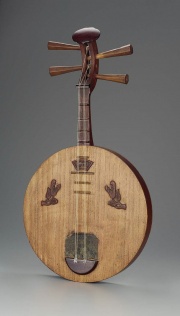Paulownia wood
Jump to navigation
Jump to search
Description
A lightweight wood obtained from several species of Paulownia trees native to Asia. Paulownia trees produce a soft, coarse-grain wood that is similar to balsa. Even though the wood is lightweight, it is strong and warp resistant. Paulownia wood is used as a lightweight crating lumber and for floats. Wood from the Paulownia tomentosa tree, native to Japan, is used for scroll boxes.
Synonyms and Related Terms
Paulownia; kiri wood (Jap.); paulownia (Fr.); empress tree; princess tree; palownia (sp)
Physical and Chemical Properties
- Trees grow 30-65 ft (10-20m) tall with 2-4ft (0.6-1.2m) trunk diameter
- Heartwood is a pale grayish brown with whitish sapwood
- Grain is usually straight with a coarse uneven texture
- Resistant to decay and weathering but not to insects
- Density = 14-19 ppcf
Working Properties
- Easy to work
- High silica in some trees can have a strong blunting effect on cutting edges
- Takes a wide variety of glues, stains, and finishes well
Resources and Citations
- The Wood Database: Paulownia
- G.S.Brady, Materials Handbook, McGraw-Hill Book Co., New York, 1971 Comment: p. 83
- Marjorie Shelley, The Care and Handling of Art Objects, The Metropolitan Museum, New York, 1987
- The American Heritage Dictionary or Encarta, via Microsoft Bookshelf 98, Microsoft Corp., 1998
- Museum of Japanese Traditional Art Crafts at http://www.nihon-kogeikai.com/ (Jap. term)

